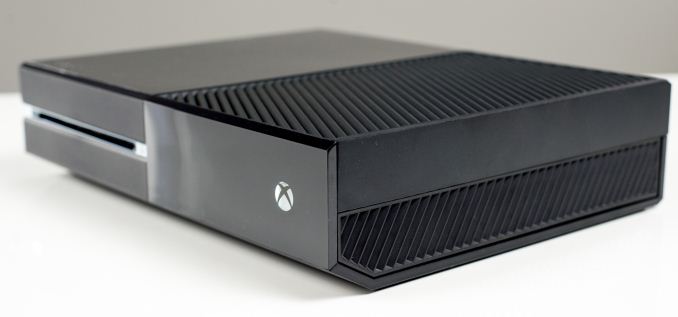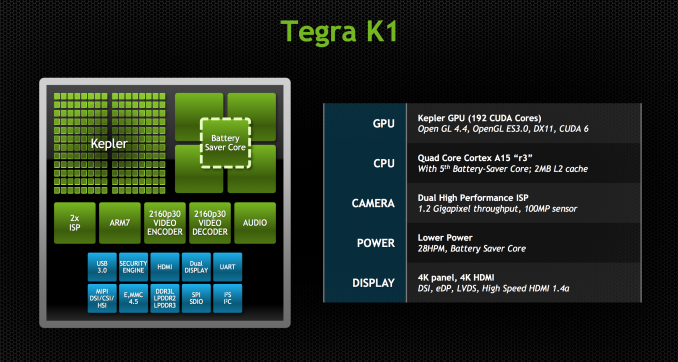Microsoft Announces DirectX 12: Low Level Graphics Programming Comes To DirectX
by Ryan Smith on March 24, 2014 8:00 AM ESTThe Changing State of Game Development
The entry of Microsoft and Direct3D into this world stands to significantly change the status quo, due to the fact that Direct3D is by far the most widely used PC graphics API. As the maintainer of Direct3D Microsoft gets to set the pace in the PC graphics industry in several ways, so while Direct3D 12 won’t be the first modern low level graphics API, there’s little question after this announcement that it’s going to have the widest impact on game developers.
Perhaps the biggest reason for this is because of the fact that like every version of Direct3D before it, Direct3D 12 is going to be a cross-vendor standard that works on multiple GPUs. Though I don’t think it’s wise to treat Mantle and Direct3D as competitors at this point, the fact that this is a cross-vendor standard and not an AMD standard means that using it targets every video card and not just AMD video cards. So for all of the impact Mantle has had over the past 6 months, and will continue to have over the coming years, the fact that we’re to a point where there’s a cross-vendor standard will be a significant milestone.
That said, whenever we talk about low level programming it’s good to also recall who this model is and isn’t for. The purpose of abstraction is not only to provide wider hardware compatibility, but to outright hide certain types of execution ugliness from programmers. The reduction in abstraction will bring with it a reduction in the amount of this ugliness that gets hidden, and as a result the amount of knowledge needed to efficiently program at a low level goes up. Low level programing should not require a code wizard, but it’s unquestionably harder than straightforward (no optimization tricks) Direct3D 11.
Which is why the launch of Direct3D 12 is poised to increase the number of options available to graphics programmers, but not replace the high level programming model entirely. The development teams best suited for taking advantage of Direct3D 12 will be the well-funded AAA game studios, particularly those doing multi-platform titles across PCs and consoles. If you’re already doing low level programming for Xbox One and Playstation 4 – and more importantly have the staff and institutional knowledge for such an endeavor – then Direct3D 12 is but a small step, mostly one of learning the syntax of the new API. But for smaller game developers that aren’t able to put together large, experienced game development teams, then a need for a high level programming API will remain. Microsoft has not talked about high level programming within the context of Direct3D 12 thus far, but one way or another – be it Direct3D 11 or a high level friendly Direct3D 12 – high level programming will be here to stay.
Though when it comes to development, the role of middleware cannot be ignored. AMD and NVIDIA already target middleware developers for integration of their proprietary technologies, and the same concept applies on a larger scale when we’re talking about making low level programming accessible to more developers. Furthermore with the massive change in middleware licensing terms we’re seeing with this generation – Unreal Engine 4 for example is just 5% of gross revenues for smaller developers that can’t negotiate otherwise – powerful middleware is increasingly accessible to all categories of developers. So even if smaller developers can’t internally develop their own Direct3D 12 code, they will have the ability to target it by inheriting the capabilities through the middleware they use.
Consoles & Mobile Devices Too
The introduction of Direct3D 12 stands to not only change the nature of graphics development for Windows, but on other Microsoft platforms too. With Microsoft’s consumer arm having their hand in everything from phones to consoles, Microsoft is seeking to extend Direct3D 12 and its benefits to these platforms too.
Specifically, Microsoft is already committing to bringing Direct3D 12 to the Xbox One, their current-generation console. Powered by an AMD SoC whose GPU in turn is based on GCN 1.1, the Xbox One is functionally an x86 PC with a modern AMD GPU, so the fact that this is even technically possible is not a surprise. But what does come as a surprise is that the Direct3D12 API is different enough that this is even necessary.
The Xbox One, as you may recall, uses Microsoft’s Direct3D 11.X API. This details of this API are scarce as they’re only open to registered Xbox One developers, but fundamentally it’s said to be a variant of Direct3D 11 with a number of Xbox One additions, including low level API features that would be suitable for programming a console. Having the Xbox One be in alignment with Direct3D 12 is going to be a good thing regardless – it will make porting between the platforms easier – but the fact that Direct3D 12 will bring any kind of meaningful improvement to the Xbox One is unexpected. Without more details on the Xbox One API it’s impossible to say with any certainty what exact functionality isn’t currently available in Direct3D 11.X or what kind of performance benefit this would bring the Xbox One, but it stands to reason that unless most Xbox One programmers have been doing high level programming, the gains won’t be as great as for the PC.
Moving on, we have the fact that Microsoft will also be bringing Direct3D 12 to handheld devices. We’re presumably talking about Windows RT tablets and Windows Phone phones, extending Direct3D 12 to the bottom as well as it goes to the top on the PC. Handheld devices stand to gain just as much from this as PCs and consoles do, due to the fact that handheld devices are even more CPU-bottlenecked than PC laptops and desktops, so a low level API is as much a natural development for these platforms as it is the PC.
The question on our end is what kind of impact this will have on the Direct3D 12 standard with respect to abstraction. SoC-class GPUs are typically years behind PC GPUs in functionality (never mind performance), and at least among current GPUs wildly differ from each other in ways the PC GPU market hasn’t seen in years. So while extending Direct3D 12 to cover multiple PC GPUs should be relatively easy, having to support SoC GPUs certainly muddles the picture. This may mean Microsoft is looking at the long view here, when SoCs such as the Tegra K1 come along with feature sets that match recent PC architectures, coupled with the fact that Windows RT/Phone has not traditionally supported a large number of SoC GPU architectures. In which case only having to cover a handful of SoC GPU architectures instead of all 7 would certainly be an easier task.













105 Comments
View All Comments
Lerianis - Monday, March 31, 2014 - link
Ah, but the PC with similar hardware will usually run it in a higher resolution and with more graphical candy turned on than on a console. That is the thing that a lot of people forget to mention, that the settings for the game in question are not always the same.I.E. the PC has AA and other settings turned on by default that make the game run 'slower'. Once you hash out what settings are not used in a console and turn those off? The numbers get a hell of a lot closer together.
inighthawki - Monday, March 24, 2014 - link
"Unfortunately, off-the-shelf game engines - particularly graphics - have remained steadfastly single-threaded, and that's not something DirectX or Mantle will be able to change."I guess you missed the giant part of the DX12 talk where they focused heavily on ease and performance of multithreading for graphics and actually came up with a nearly linearly scaling solution.
tipoo - Monday, March 24, 2014 - link
Really wondering about Mantles fate after this hits. They have a time advantage, but DirectX/Direct3D being the Windows standard that it is will be hard to compete with, particularly if the performance improvements are similar (or let alone, DX12 is better).Perhaps AMD should consider bringing Mantle to Linux.
I wonder if the consoles being AMD based will be an advantage to them too, though Microsoft has the XBO also using DX12...PS4 porting may be easier to Mantle, while XBO porting is easier to DX12 perhaps?
ninjaquick - Monday, March 24, 2014 - link
Mantle is a much broader low-level access API. D3D12 is limited by the scope of support, which is basically all driver level. They are putting as much as they can, while having intel/amd/nvidia/imagination/ti/arm/samsung/etc. all onboard for rapid implementation. Building new drivers for this, based on MS spec means they are less flexible than AMD with their own spec built around their hardware and driver platform.D3D12 will possibly be widely implemented, but that won't stop excitable rendering engineers and architects from trying out mantle anyways. I would be very surprised if any of the 'big rendering' players decide to completely forego D3D12 or Mantle. The chance to really push the boundaries as far as possible is far too tempting. Heck, low level programmability might even result in hybridization where possible, between d3d12 and mantle.
Dribble - Tuesday, March 25, 2014 - link
The time advantage isn't that great - Mantle is released beta software, by the time they actually finish it DX12 will be just around the corner and that will come out fully productized and ready to go. Given that no dev is going to bother investing time in Mantle as only a few % of users can use it unlike DX where everyone in the end will be able to use it, also they have no guarantee's AMD will ever finish it off properly or continue to support it for future gens of cards - AMD have never been great at software, unlike MS.jabber - Monday, March 24, 2014 - link
I wonder also if a lot of this is coming out of all the furious work that I bet is going on to try to bridge the performance gap between the Xbox One and the PS4.ninjaquick - Monday, March 24, 2014 - link
Actually, it is because developers have been complaining about the massive step-backwards Xbone programmability took in comparison to X360.Like, not only is there a raw performance gap between the PS4 and X1, but there is a software-api performance black-hole on the X1 called WindowsRT/x64 hybrid, with straight PC DX11.1.
ninjaquick - Monday, March 24, 2014 - link
D3D11.1**Scali - Tuesday, March 25, 2014 - link
The XBox One has its own D3D11.x API, which is D3D11-ish with special low-level features.The games I've seen on XBox One and PS4 so far, only seem to suffer from fillrate problems on the XBox, which means slightly lower resolutions and upscaling. In terms of detail, AI, physics and other CPU-related things, games appear to be identical on both platforms.
et20 - Monday, March 24, 2014 - link
Don't forget Mantle is also cross-platform, it just crosses different platforms compared to Direct3D.